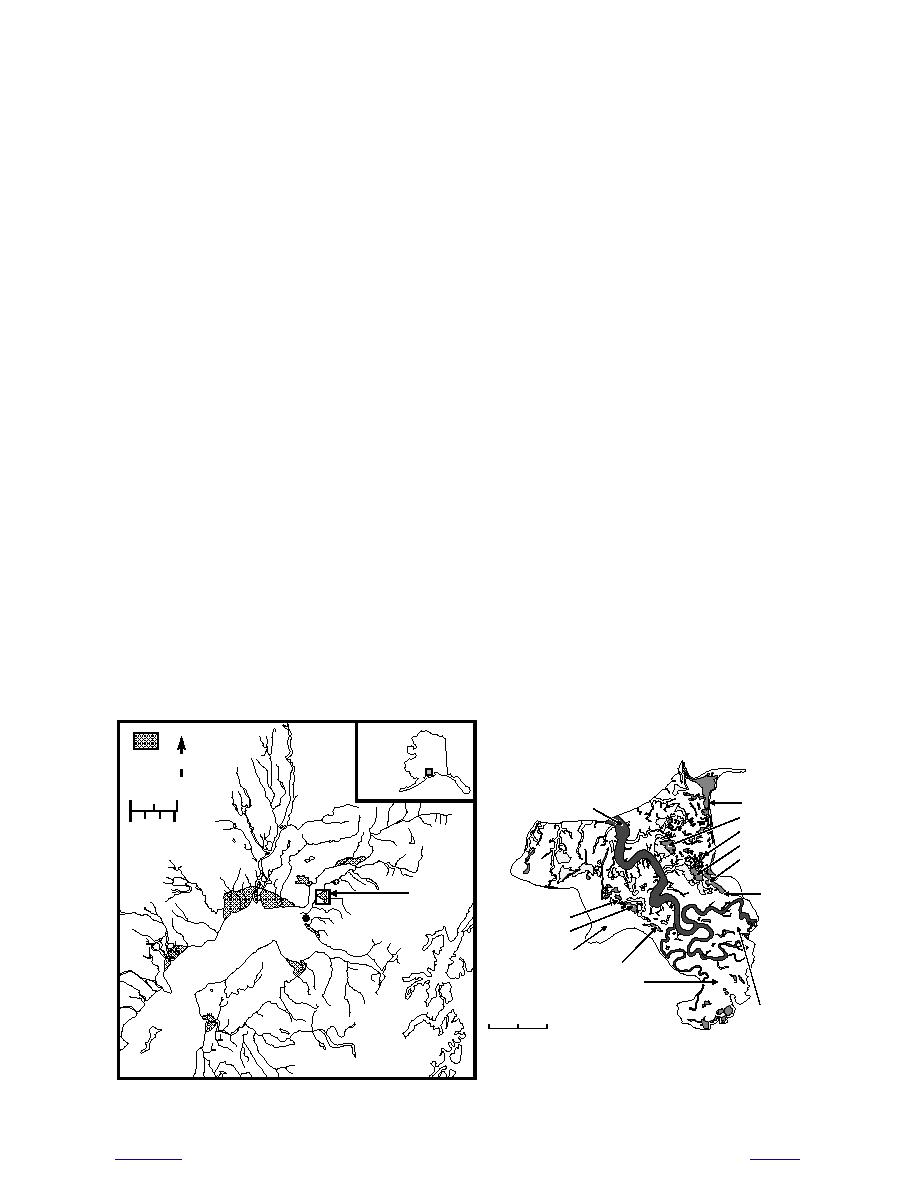
Eagle River Flats Remediation Project
Comprehensive Bibliography--1950 to 1998
SAE-IM NAM, MICHAEL R. WALSH, CHARLES M. COLLINS, AND LISA THOMAS
INTRODUCTION
Eagle River Flats (ERF) is an estuarine salt
more deaths were occurring than in previous
marsh located at the mouth of Eagle River, along
years. The species of birds that suffered the most
the upper Cook Inlet, near Anchorage, Alaska
mortalities were the dabbling ducks and swans.
The cause of deaths could not be readily explained,
(Fig. 1). This 865-ha region, which is within the
Fort Richardson Army Base, serves as a staging
and, in 1982, various government agencies (U.S.
area for the migrating waterfowl population dur-
Fish and Wildlife Service, the Alaskan Depart-
ing the spring and fall migration season. ERF has
ment of Fish and Game, and the U.S. Army Direc-
also been used by the U.S. Army as its primary
torate of Environmental Hygiene) joined efforts
munitions impact area for Fort Richardson since
to further examine this problem. Eventually, an
the late 1940s.
Eagle River Flats Interagency Task Force was
High waterfowl mortalities at ERF were first
established with members from the U.S. Army,
noted in the early 1980s. An increased number of
the U.S. Environmental Protection Agency, the
carcasses, as well as feather piles along the edge
U.S. Fish and Wildlife Service, the Alaska Depart-
of the salt marsh, were the first indications that
ment of Fish and Game, the Alaska Department
Area
of
Salt N
Study
Marsh
Knik Arm
0
20 miles
Area D
Eagle River
Pond 109 (BT)
0
30 km
Pond 155
Pond 183
Pond 146
Eagle River
Area C
Flats
Pond 256
Anchorage
Pond 258
Area A
Pond 290
et
Area B
l
In
k
oo
Racine
0
1000 m
C
Island
Kenai Peninsula
b. Closeup.
a. Location of ERF.
Figure 1. Anchorage, Alaska, area showing the location of ERF.
to contents
to index



 Previous Page
Previous Page
